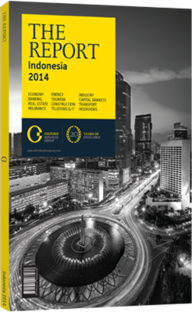A full plate: The government is working to maintain reliable supplies of rice
As the primary food staple for the vast majority of Indonesians, maintaining a reliable supply of rice remains a social and economic priority for the government as a growing domestic population continues to drive demand. In spite of being one of the world’s leading rice producers, the country has been forced to rely on imports to make up the shortfall from domestic production. In 2011 and 2012 the country imported 2.75m tonnes and 1.38m tonnes, respectively, in order to stabilise reserves, according to data from the Statistics Indonesia (Badan Pusat Statistik, BPS). Currently imports represent a fraction of domestic output levels, which surged to 70.87m tonnes in 2013, up 2.6% from 69.06m tonnes the previous year on the strength of a bumper crop aided by favourable weather conditions and relatively mild pests and plant diseases, according to BPS.
Homegrown
Java remains the centre of paddy production, accounting for 48.6% of all rice output in 2013, while maintaining higher yields of about 58 tonnes per ha on average compared to an average of 45.8 tonnes per ha for the rest of the country. Although some of this expansion can be attributed to a corresponding increase in paddy acreage, which has spread from 11.79m ha in 2000 to 13.77m ha in 2013, intensification efforts within the sector have also substantially boosted productivity across the board. After yielding an average of 44.01 tonnes per ha in 2000, productivity has improved consistently over the years to a high of 51.16 tonnes per ha in 2013. Annual output is projected to nudge up slightly to 70.87m tonnes in 2013, according to BPS projections.
The government has set about enhancing domestic food security through various new regulations in recent years. The most notable of these is the passage of the 2012 Food Law targeting food security and import restrictions among other items. The key provision of the law involves reinvigorating the State Logistics Agency (Bulog) in August 2012, which is responsible for procuring, storing and distributing strategic commodities, such as rice, to stabilise the supply of staples and insulate them from external price shocks. The organisation was previously successful in meeting self-sufficiency targets in the mid-1980s and again in 2008-09. Bulog holds a monopoly on imports, exports and distribution of commodities under its authority and has generally maintained rice stocks in the range of 1.5m-2m tonnes at any given time through domestic purchases and, if need be, imports, although this figure is expected to increase to 4m tonnes in 2014.
Moving Forward
While the rice yields of the past few years represent an incremental improvement over the past decade in terms of both yield and production, overall output remains well short of long-term goals laid out by the Indonesian Chamber of Commerce and Industry’s food development programme, Vision 2030.
Under this plan, rice production is targeted to increase from the 66.5m tonnes produced in 2010 to 81m tonnes by 2020 and 90.1m tonnes by 2025.
According to the roadmap, the country is planning to boost cultivated paddy acreage while simultaneously increasing efficiency through a variety of measures that include greater fertiliser utilisation, farmer education and training programmes, expansion of paddy areas and the number of harvests per year, and the use of high-quality seeds. In addition to these initiatives, the government is working to refurbish and expand its irrigation infrastructure. Udhoro Kasih Anggoro, the director-general of staple foods at the Ministry of Agriculture, said in August 2013 that the government had allocated Rp6trn ($600m) to rehabilitate the irrigation system in 2013 with the goal of repairing all damage within four years, which could boost production by 7m9m tonnes per year. Smallholders are also being aided by a number of educational programmes, public-private partnerships to provide farmers access to modern farming methods and technologies, and subsidised financing programmes. Complementing efforts to boost productivity, the roadmap also calls for a reduction in demand from Indonesians by promoting the consumption of alternative staple crops and minimising waste.
You have reached the limit of premium articles you can view for free.
Choose from the options below to purchase print or digital editions of our Reports. You can also purchase a website subscription giving you unlimited access to all of our Reports online for 12 months.
If you have already purchased this Report or have a website subscription, please login to continue.

